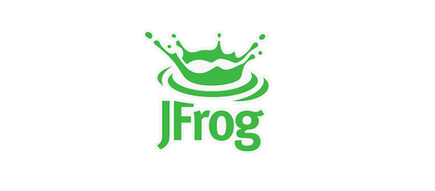How to Install JFrog Artifactory on CentOS Stream 10 — Complete DevOps Setup Guide

Introduction
If you’re an IT Operations or DevOps professional managing build pipelines and binary artifacts, setting up a reliable repository manager like JFrog Artifactory can significantly improve your CI/CD workflow.
This tutorial will guide you step-by-step through installing JFrog Artifactory on CentOS Stream 10, including system preparation, installation, configuration, and verification.
Prerequisites
Before installing Artifactory, make sure your system meets the following requirements:
1. Operating System
- Use CentOS Stream 10 or another RPM-compatible distribution.
- Update your system packages:
sudo dnf update -y
sudo reboot2. Privileges
- You’ll need a sudo user or root access.
- Adjust your firewall and SELinux policies if necessary.
3. Minimum Specifications
- Memory: 4 GB minimum (8 GB+ recommended for production).
- Storage: Dedicated storage for artifacts is recommended.
- Database: External PostgreSQL database for production setups.
4. Dependencies
- Java: Artifactory requires a compatible JVM (check the official compatibility matrix).
- Ports: Default UI runs on ports
8081or8082— ensure these are open and not in use.
Step-by-Step Installation on CentOS Stream 10
We’ll use the RPM repository method, which is the most straightforward approach for CentOS Stream environments.
1. Add the JFrog Repository
wget https://releases.jfrog.io/artifactory/artifactory-pro-rpms/artifactory-pro-rpms.repo -O jfrog-artifactory-pro-rpms.repo
sudo mv jfrog-artifactory-pro-rpms.repo /etc/yum.repos.d/2. Install the Artifactory Package
sudo dnf update -y
sudo dnf install jfrog-artifactory-pro-<VERSION>.rpmReplace
<VERSION>with your desired release (e.g.,7.x.x).
3. Set Environment Variable (Optional)
export JFROG_HOME=/opt/jfrogBy default, Artifactory installs under /opt/jfrog.
4. Start and Enable the Service
sudo systemctl enable artifactory.service
sudo systemctl start artifactory.serviceVerify status:
sudo systemctl status artifactory.service5. Access the Web Interface
Open your browser and visit:
http://<SERVER_IP>:8082/On first access:
- Change the default admin password (
admin/password). - Configure the Base URL.
- Complete the setup wizard.
Recommended Post-Installation Configurations
1. Connect to an External Database (Production)
Edit system.yaml to point to your PostgreSQL instance:
shared:
database:
type: postgresql
driver: org.postgresql.Driver
url: jdbc:postgresql://<DB_HOST>:5432/artifactory_db
username: artifactory_user
password: your_secure_password2. Configure File Storage
For production, use dedicated filestores such as NFS, S3, or Azure Blob Storage.
Local file storage is acceptable for single-node or testing environments.
3. Firewall & SELinux Settings
- Allow incoming connections on port
8082:
sudo firewall-cmd --add-port=8082/tcp --permanent
sudo firewall-cmd --reload- If SELinux is enforcing, test temporarily with
setenforce 0and adjust policies as needed.
Troubleshooting
Here are some common issues and how to fix them:
| Issue | Cause | Solution |
|---|---|---|
| “Master key is missing” | Artifactory cannot access its storage or DB | Check file permissions or initialize DB properly |
| Database type not allowed | Non-PostgreSQL DB detected | Add allowNonPostgresql: true in system.yaml |
| Service won’t start | Java version mismatch or port conflict | Verify Java version and ensure ports are free |
You can inspect logs for detailed errors:
tail -f $JFROG_HOME/artifactory/var/log/console.logVerification
To confirm the installation:
- Visit
http://<SERVER_IP>:8082/ui/and log in. - Navigate to Admin → System Info to verify your version.
- Try uploading a sample artifact to confirm repository functionality.
Summary
In this tutorial, you’ve learned how to install JFrog Artifactory on CentOS Stream 10 step-by-step:
✅ Prepare CentOS Stream 10 and dependencies.
✅ Install via the official JFrog RPM repository.
✅ Enable and run the Artifactory service.
✅ Configure external database and file storage.
✅ Troubleshoot common issues.
Using Artifactory gives DevOps teams a centralized platform for managing build artifacts, Docker images, and deployment binaries efficiently.